What have been the patterns of use and enrolment in the French and English sub-systems of education between the country’s Regions? (Sample taken from secondary education)
Data Source: Annual Statistical Yearbook, Cameroon Ministry of Secondary Education (MINESEC) 2013-2014.
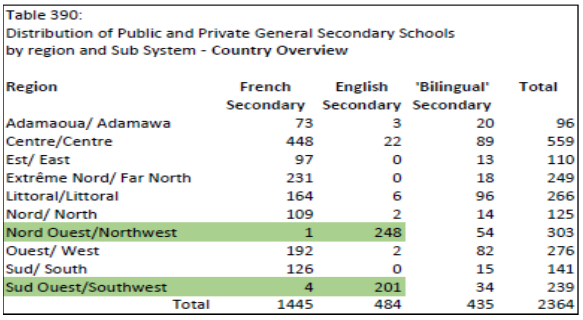
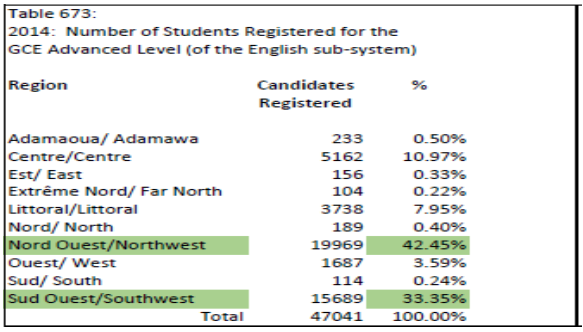
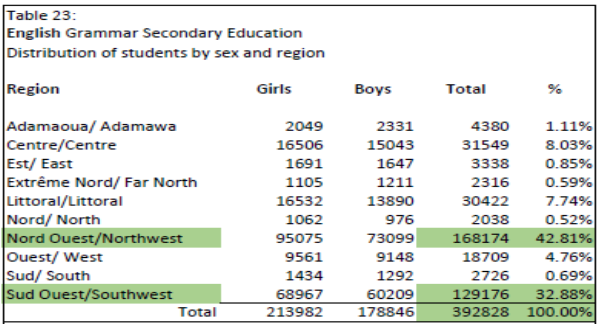
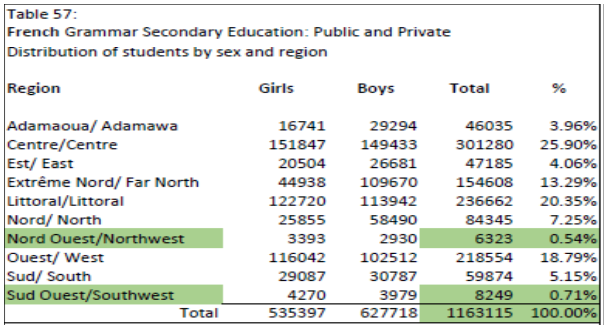
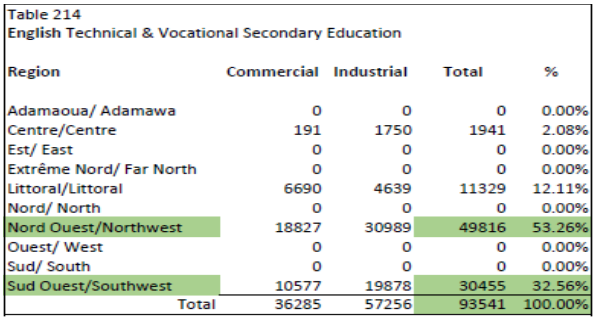
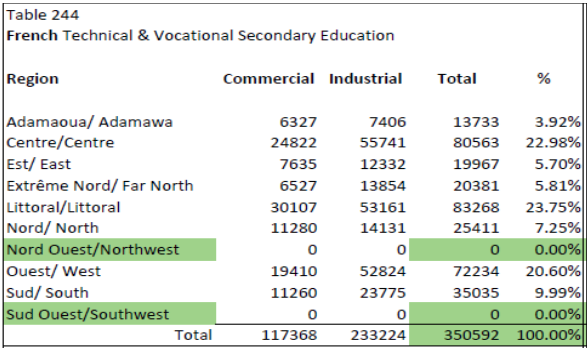
Data Explanation:
The supply of secondary educational facilities across the regions overwhelmingly follows the French/English marker. While all regions have a supply of schools which offer both French and English sub-systems within the same establishment (termed ‘bilingual’ schools), schools that offer only 1 sub-system (French or English) are located almost exclusively in the regions where the said language predominates.
75% of all learners learners in the country’s English secondary education sub-system (in the general/classic education track) were in schools in the Northwest (NW) and Southwest (SW) regions; an additional 15% of the learners were in the cosmopolitan Centre and Littoral regions. Logically, schools in the NW and SW provided 75% of the candidates who registered for the General Certificate of Education (GCE) Advanced Level examinations which mark 7 years of secondary education. (NB: Some of these candidates were boarders, whose primary/family residence was outside the NW/SW).
Conversely, 98.8 % of all students students enrolled in the French secondary education sub-system (in the general/classic education track) were in schools located in Cameroon’s 8 regions where French is the predominant official language. Schools in the Northwest and Southwest regions accounted for only 1.2 % of the national total of students enrolled in the French secondary education sub-system.
The outlook is even starker for secondary education in the vocational and technical track. In the English-based technical and vocational education system, 85% of the national total of learners were in schools in the NW and SW, with an additional 12% in the cosmopolitan Littoral region. Six regions of the country (Adamawa, East, Far North, North, West, and South) did not have a single student enrolled in the English technical and vocation system. In French technical and vocational education, 100% of the learners were enrolled in schools outside the NW and SW, which had no student enrolled.
In conclusion, there is a strong regional predominance of the respective education systems in their areas of historical use , despite some cross-regional penetration in particular in the larger, cosmopolitan, urban areas. It is thus not surprising (for instance, with respect to the English educational sub-system), that there are strong centrifugal pressures from educational stakeholders in the NW and SW regions to have greater control over, and to manage the English educational sub-system’s curricular orientation, its systemic development, and its workforce (teachers). The reason advanced is often to secure that sub-system’s integrity from unplanned influences from the (demographically larger) French educational sub-system, when both are centrally managed at the national level.